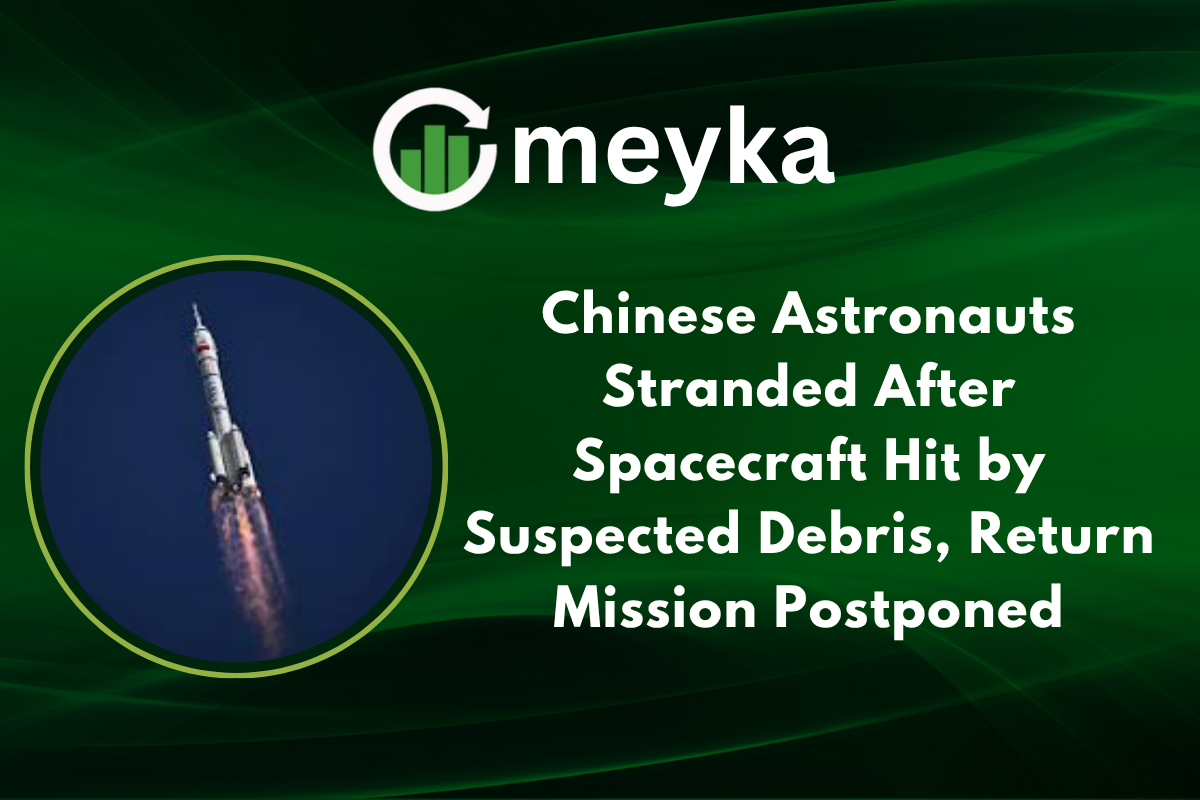Chinese Astronauts Stranded After Spacecraft Hit by Suspected Debris, Return Mission Postponed
A team of three Chinese astronauts are temporarily stranded at the Tiangong space station after their return capsule was believed to have been struck by a tiny piece of space debris. China’s space agency delayed the planned homecoming, saying engineers will run impact analysis and safety checks before any landing is attempted.
What happened?
The Shenzhou-20 crew, made up of commander Chen Dong, pilot Chen Zhongrui, and engineer Wang Jie, had planned to return to Earth after a six-month mission. The return was scheduled for early November, but the China Manned Space Agency announced a postponement after detecting a suspected impact to the return capsule, the part of the spacecraft that carries astronauts back through the atmosphere.
Why is that happening, and what did the agency say?
China’s official statement said the delay is meant to protect the astronauts and guarantee mission success, engineers are doing impact analysis and risk assessment, and state broadcaster CCTV confirmed the return date is postponed indefinitely.
Chinese astronauts stranded, what risk does debris pose
Space debris includes tiny fragments of older rockets, paint flecks, and spent parts that travel very fast, they can punch holes or damage heat shields on return capsules, so even small strikes are serious. The suspected hit appears to have affected the Shenzhou-20 return vehicle, which is why mission control paused the landing plans until checks finish. Global News reported the delay and cited the official CMSA announcement.
How big is the danger? Can astronauts be safe in orbit?
The crew remains aboard the station, which is designed for long stays, and the new incoming team from Shenzhou-21 has docked and is on site, so station operations are covered. If the damaged capsule cannot be used, protocol allows the Shenzhou-20 crew to return in the fresh capsule that arrived with the new team, though plans depend on the damage assessment. The agency has not given a timeline for a decision.
Will the astronauts be rescued quickly?
Rescue is not like on Earth, but there are contingency plans, including using the new capsule; the priority is safety, and that is what CMSA is doing now.
Mission details, crew, and timeline
The Shenzhou-20 mission launched in April and carried out science and maintenance tasks on Tiangong for six months. The three astronauts had reached the tail end of that rotation when mission control said there may have been a strike to the return vehicle. The replacement crew, Zhang Hongzhang, Wu Fei, and Zhang Lu from Shenzhou-21, docked successfully over the weekend, providing redundancy and extra hands for station duties.
What if the capsule is beyond repair
If impact analysis shows the return capsule is not safe for reentry, the Shenzhou-20 crew would use the Shenzhou-21 capsule to come home, according to reporting that lays out the usual protocol for crew rotations. Engineers will weigh options carefully because reentry places huge stresses on a capsule, and safety cannot be rushed.
Technical checks are being done now
Engineers focus on impact analysis, visual inspections, telemetry reviews, and risk assessment. They will check structural integrity, the heat shield, seals, and parachute systems, and any telemetry that might show how, when, and where the strike occurred. Only after the engineers clear the capsule will mission control set a new landing date. Global News emphasized the indefinite nature of the delay while analysis continues.
Could this be from a micrometeorite instead of man-made debris? Yes, both natural micrometeorites and man-made orbital debris can cause similar damage; investigations look for signature traces to tell them apart.
International context and risks to all crews
The incident underscores a growing global problem, low Earth orbit hosts more and more debris, and even tiny particles travel at orbital speed which makes them dangerous. Similar delays and adjustments have happened with other nations, and space agencies increasingly plan for debris monitoring, shielding and contingency returns. The Shenzhou program regularly rotates crews every six months, and China has been expanding its independent human spaceflight capabilities since 2003.
Media and public reaction, plus video briefing
News outlets ran the story quickly as the agency posted the initial announcement on social channels, and broadcasters, including Global News and FO,X produced explanatory coverage. The YouTube video attached by local sources shows the breaking news summary and is useful for viewers who want a short visual rundown of what we know so far. Watching official agency releases and major broadcasters is the best way to track verified updates.
What this means for the astronauts, families and program
For the astronauts, mission life will continue on Tiangong while teams wait for clearance. Families will wait longer for reunion, and the program will document findings to prevent future hits. For the wider space community, the event is another reminder of the need for better debris tracking and orbital cleanup policy, it may accelerate safety upgrades for return vehicles, and it could affect the scheduling of other missions if spare capsules are shifted to cover return.
Will this slow China’s broader space plans?
Not likely in the long run, but it may cause short delays while safety checks and hardware changes are made; China’s long-term goals remain intact.
What to watch for next
Expect official updates from the China Manned Space Agency, state broadcaster CCTV, and international outlets monitoring the situation, as engineers report on the impact analysis and set a new return date if safe. If the capsule is deemed unusable, watch for a formal plan to use the Shenzhou-21 capsule for the return, and for a timeline from mission control on when reentry will be attempted.
Conclusion: quick summary and read on
In short, Chinese astronauts stranded is a timely phrase for a situation where three crew members must wait longer because a suspected debris strike hit their return capsule. The decision to pause the return places safety first; engineers will do the checks, and contingency plans exist, including using another capsule.
This event highlights orbital debris as a shared hazard, and it will likely prompt more tracking and more protection for crews everywhere. Stay with official channels for verified updates and safety notices.
Disclaimer
The content shared by Meyka AI PTY LTD is solely for research and informational purposes. Meyka is not a financial advisory service, and the information provided should not be considered investment or trading advice.






